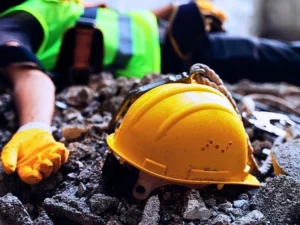Combustible dust from wood, metal, plastics, coal, biosolids, and organic materials can create an explosion under certain workplace conditions.

Workplace Dangers from Combustible Dust
When oxygen, fuel, heat, dispersion, and confinement are present in a workplace, a combustible dust explosion can occur. The combination of these five factors is referred to as the Dust Explosion Pentagon. If one of the factors is missing, a combustible dust explosion can’t occur. There are five conditions that must be present:
- Combustible dust (fine particles)
- High concentrations of dust suspended in the air
- An oxidant, such as atmospheric oxygen, chlorine, or fluorine
- An ignition source, such as electrostatic discharge, friction, hot surfaces, electrical arcing, or fire
- Confined spaces or enclosures
The dangers of combustible dust explosions exist in a variety of industries including agriculture, pharmaceuticals, pesticides, food manufacturing, furniture manufacturing, textile mills, tire and rubber plants, and tobacco plants. Common materials found in many workplaces can generate a dust explosion. Combustible dust explosions are common hazards in grain elevators, underground coal mines, and industrial environments where even mundane organic materials like sawdust, sugar, flour, and coffee can create a dangerous dust cloud. When suspended in the air in fine particles, any combustible material can burn rapidly under certain conditions. Even materials like iron and aluminum that don’t burn in larger pieces can become explosive in dust form.
The terrific force created from a combustible dust explosion can cause serious workplace injuries, deaths, and the destruction of entire buildings. Between 1980 and 2005, the U.S. Chemical Safety and Hazard Investigation Board identified 281 combustible dust explosions that resulted in 718 employee injuries and 119 employee deaths. In 2008, a Georgia dust explosion killed 14 workers in a sugar refinement plant. In 2010, 3 West Virginia workers died in a titanium dust explosion in an industrial metal processing plant that made a variety of metal parts and components.
To prevent dust explosions in the workplace, OSHA recommends that employers identify all potentially hazardous materials, the handling of such materials, operations and processing of such materials, potential ignition sources, and confined spaces. In some cases, the entire building may be considered a confined space. If combustible dust is a potential problem, an OSHA combustible dust program that outlines recommendations for dust control, ignition control, and injury and damage control should be implemented to protect workers.







